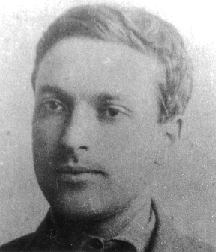
The cognitive view of learning is the result of our attempts to make sense of the world, and to do this we use all the mental tools at our disposal.
Alburt Bandura focuses on congitive factors such as beliefs, self-perceptions, and expectations, so his theory is now called a social cognitive theory.
Social cognitive theory distinguishes between enactive
and vicarious learning:
-Enactive
learning is learning by doing and experiencing the consequences of your
actions, which provide information.
-Vicarious
learning iss learning by observing others. This fact challenges the
behaviorist idea that cognitive factors are unnecessary in an explanation
of laerning because if people can learn by watching, they much be focusing
their attention, constructing images, remembering, analyzing, and making
decisions that affect learning.
Vygotsky:

Psychologists today recognize that the child's culture shapes cognitive development by determining what and how the child will learn about the world.
Lev Semenovich Vygotsky was a spokesperson for this sociocultural theory and his ideas about language, culture, and cognitive development have become major influences in psychology and education and have provided alternatives to many of Piaget's theories.
Vygotsky believed that human activities take place in cultural settings and cannot be understood apart from the settings-our specific mental structures and processes can be traced to our interactions with others.
Social Sources of Individual Thinking
-Vygotsky
believed that higher mental processes appear first between people as they
are co-constructed during shared activities. Then the processes are
internalized by the child and become part of that child's cognitive development.
Ex: First, children use language in activities with others, to regulate
the behavior of the others, and then later, the child can regulate his/her
own behavior using private speech.
-Piaget believed
that the most helpful interactions were between peers because peers are
on an equal basis and can challenge each other's thinking, but Vygotsky,
on the other hand, suggested that children's cognitive development is fostered
by interactions with people who are more capable or advanced in their thinking,
such as parents and teachers.
Cultural Tools and Cognitive Development
-Vygotsky
believed that cultural tools (including real tools and symbolic tools)
play very important roles in cognitive development. He emphasized
the tools that the culture provides to support thinking so that all higher-order
mental processes, such as reasoning and problem solving, are mediated by
psychological tools, such as language, signs, and symbols. Adults
teach these tools to children during day-to-day activities and the children
internalize them, so later the psychological tools can help students advance
their own development.
Ex: Children engage in activities with adults and they exchange ideas
and ways of thinking about or representing concepts. These co-created
ideas are internalized by children, thus, children's knowledge, ideas,
attitudes, and values develop through appropriating the ways of acting
and thinking provided by their culture and by the more capable members
of their group.
-Children
begin to create a "cultural tool kit" and transform the tools given to
them into their own representations, symbols, patterns, and understandings.
Piaget informed us that children's constructions of meanings are not the
same as adults, so in the exchange of signs and symbols, children create
their own udnerstandings, which gradually change as they engage in social
activities and try to make sense of the world. In Vygotsky's theory,
language is the most important symble system in the tool kit, and it is
the one that helps to fill the kit with other tools.